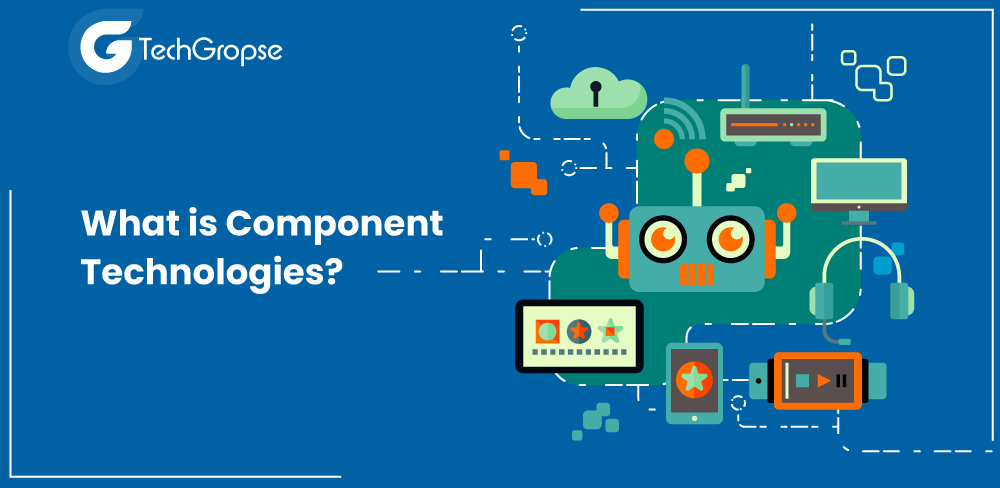In technology, the term “Component Technologies” refers to the fundamental building blocks or modules comprising larger systems or applications. These components are designed to perform specific functions independently while seamlessly integrating with other components to achieve a unified purpose. Let’s delve deeper into component technologies’ significance, types, benefits, challenges, and future trends.
What are Component Technologies?
Component Technologies encompass a wide range of software and hardware elements designed to facilitate the development, deployment, and maintenance of complex systems. These components can include libraries, frameworks, protocols, APIs (Application Programming Interfaces), microservices, and physical hardware modules. Each component serves a distinct function within a system, contributing to its overall functionality and performance.
Importance of Component Technologies
Component technologies play a pivotal role in modern software development and system architecture. By breaking down complex systems into modular components, developers can achieve greater efficiency, maintainability, and reusability in their projects. This modular approach enables teams to collaborate more effectively, streamline development processes, and adapt to changing requirements with minimal disruption.
Types of Component Technologies
Software Components
Software components include libraries, frameworks, and modules that provide specific functionalities, such as user interface components, data processing modules, or communication protocols. Examples include React.js for front-end web development, TensorFlow for machine learning, and Apache Kafka for distributed messaging.
Hardware Components
Hardware components consist of physical modules or devices that perform specific tasks within a system. These can range from processors, memory modules, and storage devices to sensors, actuators, and communication modules. Hardware components are essential for building embedded systems, IoT devices, and electronic appliances.
Benefits of Component Technologies
Increased Efficiency
By leveraging pre-built components and libraries, developers can accelerate the development process, reduce code duplication, and focus on implementing business logic rather than reinventing the wheel. This efficiency leads to faster time-to-market and lower development costs.
Flexibility and Scalability
Component-based architectures offer inherent flexibility and scalability, allowing systems to evolve and grow in response to changing requirements and user demands. Developers can easily replace or upgrade individual components without affecting the entire system, enabling seamless expansion and adaptation.
Cost Reductions
Using reusable components and open-source libraries can significantly reduce development costs by eliminating the need to develop custom solutions from scratch. Additionally, component-based architectures promote code reuse, which lowers maintenance overhead and simplifies future enhancements.
Challenges and Solutions
Integration Challenges
Integrating disparate components from different vendors or technologies can pose challenges related to compatibility, interoperability, and dependency management. Adopting standardized protocols, implementing robust APIs, and conducting thorough testing can mitigate integration risks and ensure seamless communication between components.
Security Concerns
Component-based systems are susceptible to security vulnerabilities, as each component may introduce potential attack vectors or dependencies on insecure libraries. Employing secure coding practices, conducting regular security audits, and staying vigilant against emerging threats are essential for safeguarding component-based architectures.
Compatibility Issues
Changes or updates to individual components may inadvertently introduce compatibility issues with other components or system dependencies. Employing version control mechanisms, conducting comprehensive regression testing, and adhering to backward compatibility standards can mitigate compatibility risks and ensure smooth system operation.
Future Trends in Component Technologies
Internet of Things (IoT)
Component technologies will play a crucial role in the proliferation of IoT devices and applications, enabling seamless integration of sensors, actuators, and communication modules to create interconnected ecosystems of smart devices.
Artificial Intelligence (AI) Integration
AI-driven component technologies, such as machine learning libraries and cognitive APIs, will empower developers to imbue applications with intelligent capabilities, including natural language processing, computer vision, and predictive analytics.
Blockchain Technology
Blockchain-based component technologies will enable secure and decentralized systems for digital transactions, identity management, and supply chain transparency, revolutionizing industries such as finance, healthcare, and logistics.
Conclusion
Component technologies form the foundation of modern software development and system architecture, enabling developers to build scalable, efficient, and secure systems. By embracing component-based approaches, organizations can accelerate innovation, reduce costs, and adapt to evolving technology trends with agility.
In summary, the importance of component technologies cannot be overstated in the digital age, where complexity and connectivity define the landscape of technological advancement. As we look to the future, embracing emerging trends and harnessing the power of modular design will be key to staying ahead in an ever-changing technological landscape.
FAQs
What are some examples of software components?
Software components include libraries, frameworks, and modules such as React.js, TensorFlow, and Apache Kafka.
How do component technologies contribute to cost reduction?
By promoting code reuse, accelerating development processes, and leveraging open-source libraries, component technologies help lower development and maintenance costs.
What challenges are associated with integrating component-based systems?
Integration challenges may include compatibility issues, security concerns, and dependency management issues, which can be mitigated through standardized protocols and thorough testing.
What role do component technologies play in IoT development?
Component technologies enable seamless integration of sensors, actuators, and communication modules in IoT devices, facilitating the creation of interconnected smart ecosystems.
How do emerging trends like AI and blockchain impact component technologies?
AI integration enables intelligent capabilities in applications, while blockchain technology ensures secure and decentralized systems, expanding the possibilities for component-based architectures.











One thought on “Understanding Component Technologies”